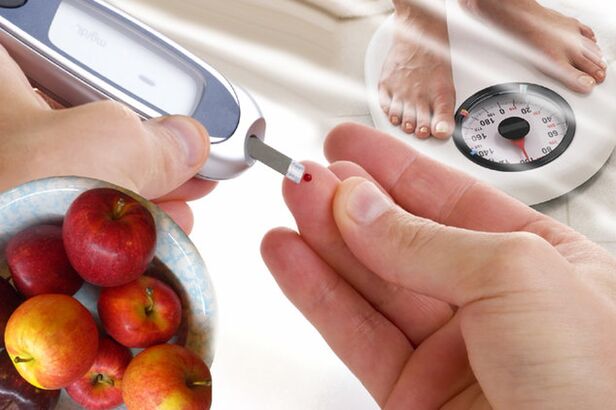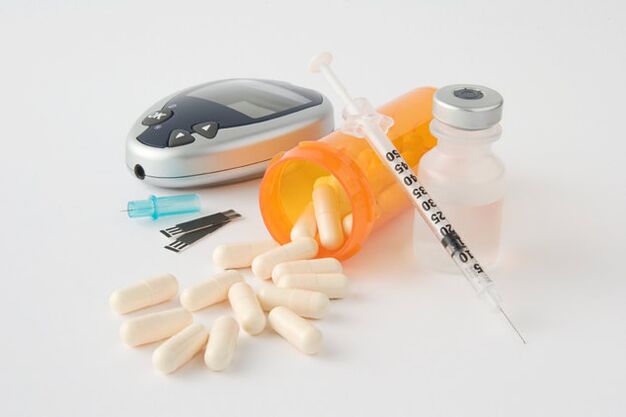The hormone insulin deficiency is a disease that has been known since ancient times, but despite this, coupled with the rapid development of medical technology, it is extremely difficult to discover new knowledge about the disease at an early stage. Many patients don't even know diabetes exists, attributing symptoms to hormonal changes in the body and other ailments. Diabetes can negatively affect health and metabolic processes, so it is important to detect it early and start treatment promptly.
What is diabetes?
Diabetes is a chronic endocrine disease that develops due to a lack of insulin. A hormone synthesized by the pancreas is involved in the breakdown of sugar and the transport of glucose through the bloodstream to organ tissues to provide the body with additional energy. In the absence of insulin, sugar levels can rise significantly, which can negatively affect the entire body.
Cause of disease development
The disease most often occurs in the presence of the following causes or preconditions:
- Genetic susceptibility, in particular, if the father has diabetes, the child is much more likely to develop the disease than is observed in the mother.
- Improper nutrition - misuse of foods high in calories, glucose and carbohydrates.
- The presence of overweight, along with secondary and subsequent levels of obesity, increased the likelihood of developing diabetes by 80 percent.
- Lack of physical activity and low levels of human activity.
- Often experience stressful situations or chronic depression. Severe shock or mental breakdown can also trigger the disease.
- Long-term use of a certain group of drugs, such as hormones, diuretics, or choleretic drugs.
- Viral infection in the body (chickenpox, flu, rubella).
symptoms of disease
Warning signs that are evidence of a disease include:
- Persistent thirst that doesn't go away even after heavy drinking.
- Frequent urination, especially at night. This creates some discomfort and inconvenience and goes against the established way of life.
- Urine droplets are left on the linen and dry to resemble dry starch marks (white and dense spots).
- The person complained of fatigue and lethargy.
- Vision drops sharply, and all objects become blurred.
- There is often tingling and numbness, especially in the palms and soles.
- Wounds heal slowly and very poorly, even on the smallest and most insignificant.
- Patients are concerned about itching, which is especially intense in the groin area.
- Sudden weight loss with no other apparent cause.
- Insatiable hunger.
It is important to remember that many symptoms already appear when there is a lack of insulin in the body and the irreversible process of hormone production by the pancreas has already begun. The initial stage of the disease is very difficult to determine, so 80% of patients are unaware of the disease.
type of diabetes
There are two types of diabetes that have characteristic differences despite some similarities.
- Type 1 diabetes (insulin-dependent) is a disease characterized by the death of pancreatic beta cells, whose primary role is to produce insulin. As a result of this process, hormone deficiencies develop, which can lead to diabetes. The reasons for the development of the disease include a violation of the immune system, the presence of viral infections in the body. Often, this type of disease affects children and adolescents. The only treatment option for this disease is regular insulin injections for the rest of your life.
- Type 2 diabetes is a disease that affects people over the age of 30 and develops due to a lack of awareness by the body, tissue cells and organs of the insulin produced by the pancreas. A process by which glucose builds up in the blood and triggers negative processes in the body due to the body's incorrect response to hormones. Without prompt treatment, insulin production stops completely, as elevated glucose levels in the blood can adversely affect beta cells and lead to their destruction.
Diagnosis of diabetes
To diagnose this condition, you must contact the clinic to see an endocrinologist who specializes in this condition. For exams, perform the following procedures and exams:
- Fasting blood to check blood sugar levels. In some cases, when a patient is at risk, a stress test is done to determine glucose tolerance.
- Take a urine test for sugar content and determine its level. A urine test may also be done to check for the presence of acetone.
- It is also important to perform an analysis of the HbA1c installation, which will help determine the average blood sugar over the past three months.
- It's important to remember that diabetes is a chronic, incurable disease, so regular maintenance treatment is required to maintain normalcy.

treatment of disease
The main treatment for type 1 diabetes (insulin-dependent) is regular insulin injections. Thanks to modern medical equipment, injections have become easier; insulin pumps and injection pens are used for this. Each patient's insulin dose is set individually and changing it yourself is not recommended. The amount of insulin depends on the amount of sugar in the blood, the presence of other co-morbidities (eg obesity), and the patient's lifestyle.
In cases of pancreatic insufficiency, doctors may prescribe drugs that stimulate hormone production in the body. To eliminate insulin resistance in the body, other groups of drugs can be used to eliminate insulin resistance and help maintain human health. An important factor is adhering to a special diet in which foods are chosen that contain minimal sugar, carbohydrates, and also stimulate the pancreas.

prevent disease
In order to avoid the development of the disease, it is important to follow the advice of an endocrinologist, which will help to stay healthy and not belong to a risk group. Prevention methods include:
- People at risk are especially advised to regularly check their blood sugar levels. People over the age of forty should have this study done regularly, at least twice a year.
- Change your eating habits and switch to a balanced diet based on healthy foods—low-glucose fruits, vegetables, fish, lean meats. Additionally, it is recommended to follow a diet that divides food intake into three meals and several snacks.
- Do simple physical activity every day, which will help normalize your weight and reduce the likelihood of developing diabetes.
- Normalize your weight, which will help reduce the likelihood of the disease.

























